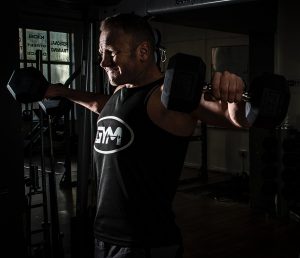No matter what you are training for, rest and recovery are critical components of your training program. Whether you are weight training, training for a fun run, or levelling up to tackle an Ironman, rest and recovery plays a major role in your success.
Unfortunately rest and recovery is often overlooked. It’s not uncommon to train through planned rest days with the belief that, “if I get another training session under my belt, I’ll be even fitter and stronger.” This could not be further from the truth. Over training without appropriate rest periods and recovery can result in joint impingements, muscles strain, reduced mobility, and general fatigue.
Recovery has many elements to it, to maximise the body’s ability to repair, restore and replenish. There are many different systems in our body – hormonal, muscular, digestive and immune systems are just a few. All these systems need time to recover from the stress and strain that we put them under during training.
When I think of rest and recovery I think of four things: sleep, hydration, nutrition and stretching (mobilisation). These are listed in no particular order as one is no more important than another.
- SLEEP
It is when you are asleep that your body is working at it’s most efficient to repair and restore.
How much is enough sleep? 7-10 hours a night depending on your training intensity and lifestyle.
Did you know that it is the hours before midnight that are the most effective when we sleep? Try and sleep in a natural environment free of artificial lights and don’t watch TV in your room or work on your laptop – treat your bedroom as your space for rest.
- HYDRATION
Hydration is always an important factor that is focused on, in the lead up to, or during an event. However it is equally important to ensure that you are drinking enough water before, during and after training. Water helps all of our systems work more efficiently, allows our body to absorb nutrients more effectively and lowers the level of stress on our heart.
Water is the best way to hydrate. Try to stay away from sports drinks which have large amounts of sugar and salts in them that the body doesn’t need.
- NUTRITION
As your training intensity increases so too will your need to adequately fuel your body.
The key is moderation and balance. Eating clean and balanced meals will ensure your body can perform at the intensity you need it to and recover after. You may find that what you used to eat is not enough anymore and you need to add another snack into your day.
The key is to plan and be prepared. Do a weekly shop and make sure that you have everything cut and prepared so that all you have to do is grab it out of the fridge in the morning and head of to training/work. I promise you the few short hours that it takes to do this on Sunday afternoon will make your life so much easier.
- MOBILITY AND SMR – SELF-MYOFASCIAL RELEASE (FOAM ROLLING)
What is increased mobility? Working your muscles through their full range of motion and progressively overloading them in those positions helps to rebuild strength and stability. This increases range of movement and mobility. It’s also the key to minimise the risk of short and long term injury.
SMR – The phrase myofascial is broken down into two words. Myo (meaning muscle) and Fascial (meaning facia). Facia is the connective tissue found throughout the body. It covers our muscles, organs, nerves and blood vessels. Self Myofascial Release is a fancy way of saying you’re giving yourself a massage with the use of a foam roller or massage ball. The theory behind SMR is that it is able to clear up restrictions and muscle knots, while also breaking down adhesions and scar tissue, leading to an increase of flexibility of soft tissue. There are multiple benefits to foam rolling. It aids to correct muscle imbalances, assists in improving joint range of motion, improves neuromuscular efficiency, reduces soreness and improves tissue recovery.
Knowing what you know now do you think you need to change the balance in your training so that rest and recovery play a greater role? Just a little extra sleep, a better diet and adding time each day to foam roll could make a huge difference to your training and be the key to reaching the health and fitness goals that you are working so hard to achieve.
Written by Coach John




